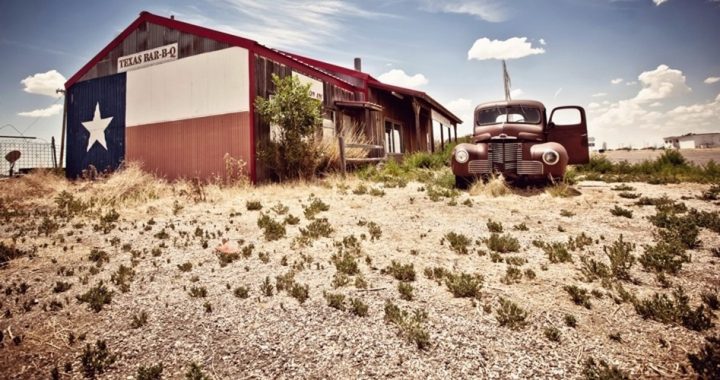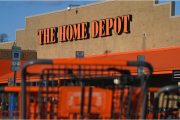
Areas on the U.S. side of the southwest U.S.-Mexican border are “some of the safest communities in America,” says Gene Garza, the director of the U.S. Customs and Border Protection (CBP) — an extension of the U.S. Department of Homeland Security (DHS) — in Laredo, Texas. The Laredo Field Office maintains the largest amount of commercial traffic throughout the entire U.S.-Mexican border, processing more than $104 billion in merchandise in 2010 alone.
Testifying before the House Homeland Security Subcommittee on Border and Maritime Security Tuesday, during a hearing entitled, “Using Technology to Facilitate Trade and Enhance Security at Our Ports of Entry,” Garza said his analysis stems from the FBI’s Uniform Crime Reports (UCR), which document crime statistics in the U.S.
“In fiscal year 2011, CBP seized 5 million pounds of narcotics, including nearly 370,000 pounds seized at the ports of entry. These numbers demonstrate the effectiveness of our layered approach to security,” Garza testified. “Violent crime in border communities has remained flat or fallen in the past decade, according to the Federal Bureau of Investigation’s (FBI) Uniform Crime Report, and some of the safest communities in America are at the border. In fact, violent crimes in Southwest border counties overall have dropped by more than 40 percent and are currently among the lowest in the Nation per capita, even as drug-related violence has significantly increased in Mexico.”
Naturally, DHS Secretary Janet Napolitano backed Garza’s profession that the U.S.-Mexican border harbors some of the safest communities in the country. “Violent crime in U.S. border communities has also remained flat or fallen over the past decade, and statistics have shown that some of the safest communities in America are along the border,” Napolitano stated, in an April 25 testimony before the Senate Judiciary Committee.
However, Garza’s and Napolitano’s assessments contradict findings from the U.S. Attorneys’ Annual Statistical Report for Fiscal Year 2011, which show that 80 percent of all criminal cases in U.S. Magistrate Courts occurred in districts along the border. While the latest U.S. Attorneys’ analysis does not specifically include U.S. border violence, the FY 2010 report notes, “Violence along the border of the United States and Mexico has increased dramatically during recent years. The violence associated with Mexican drug trafficking organizations poses a serious problem for law enforcement personnel.”
Furthermore, in a May 2011 hearing, director of the Texas Department of Public Safety Steven McCraw expressed skepticism about the capacity of the UCR to examine criminal behavior along the border. He stated:
To accurately assess the overall criminal impact of an unsecure border on Texas requires the syntheses of several different variables within and outside the border region. For example, if we were to use only Index Crimes as reported through the FBI’s Uniform Crime Reporting (UCR) system, it would not include essential variables such as extortions, kidnappings, smuggling incidents, corruption, smuggling-related trespassing and vandalism, arrests of aliens from countries with strong terrorist networks, seizures of Cartel drugs, weapons and bulk cash on the 10 major smuggling corridors throughout Texas, Cartel command and control networks operating in Texas, increases in Cartel-related gang activity, death squad members living in Texas, Cartel-related killings of U.S. citizens in Mexico, Cartel-related violence along the border directed at U.S. law enforcement and the recruitment of Texas children in our border region to support Cartel operations on both sides of the border.
The UCR examines data only on “property crime” and “violent crimes,” leaving out key criminal incidents noted by McCraw, meaning that Garza’s assertion that U.S. border areas are some of the safest communities in America — which he concludes strictly from UCR data — is likely flawed.
Indeed, the U.S. Attorneys’ report counters Napolitano’s allegations that violent crime has “remained flat or fallen in the past decade.” There were 71,387 criminal cases filed in the U.S. Magistrate Courts in FY 2011, according to the Attorneys’ most recent report, of which 57,310, or 80 percent, took place along the southwest border. Established in 1968, Magistrate Courts maintain a “considerable criminal caseload,” as magistrate judges administer preliminary hearings, preside over misdemeanor trials, and enter rulings on pre trial motions.
While the Attorneys’ most recent report does not cite illegal immigration issues, the FY2010 report does — and its conclusions are explicit:
Illegal immigration provides the initial foothold with which criminal elements, including organized crime syndicates, use to engage in a myriad of illicit activities ranging from immigration document fraud and migrant smuggling to human trafficking… Violence along the border of the United States and Mexico has increased dramatically during recent years. The violence associated with Mexican drug trafficking organizations pose[s] a serious problem for law enforcement.
Human trafficking also has become a tragic product of illegal immigration. Globally, human trafficking profits have soared as high as $32 billion annually, and illegal immigrants crossing the U.S.-Mexican border are prime targets. Smugglers promise young Latin Americans crossing the border — who are poor and desperate for employment — a lucrative job, and then force them into labor or sex trafficking.
Immigration and Customs Enforcement worker Delbert Richburg says smugglers “sell big lies…The traffickers seek out teenagers in remote towns in Latin America with the promise of getting jobs in restaurants or caring for children. On arriving here, they keep them captive and isolated.”
All in all, the panoramic view of America’s southwest border is grim, as drug violence, human trafficking, and countless other crimes are spilling over onto American soil. As dramatic as it sounds, Arizona Governor Jan Brewer says she has noticed skulls rolling through her state’s deserts, while Rep. John Culberson (R-Texas) says violence on Texas’ side of the border is “out of control.”
“Of course there is spillover violence along the border,” Rep. Michael McCaul (R-Texas) affirmed in a congressional hearing late last year. “It is not secure and it has never been more violent or dangerous than it is today. Anyone who lives down there will tell you that.”



